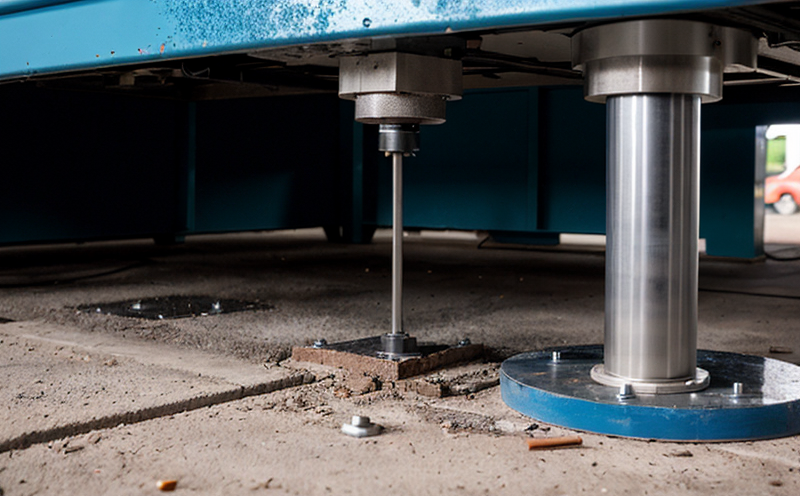ISO 7884 Residual Stress Measurement of Glass Products
The measurement of residual stress in glass products is critical to ensuring their durability and performance. ISO 7884 provides a standardized approach for this purpose, enabling consistent and reliable testing across different laboratories and industries.
The process involves the application of external loads or temperatures that cause deformation in the material. These deformations are then used to calculate internal stresses within the glass specimens. Residual stress can significantly impact the mechanical properties of glass products, including their strength and resistance to fracture. Understanding these stresses is essential for quality assurance and compliance with international standards.
The testing procedure typically begins with selecting appropriate specimens that represent typical product geometries. Specimens must be prepared carefully to avoid introducing additional stresses from improper handling or preparation techniques. After preparation, the specimens are subjected to controlled loading conditions under precisely defined protocols based on ISO 7884 guidelines.
Once loaded, sophisticated optical instruments measure minute deformations caused by internal stresses. From these measurements, engineers can calculate the residual stress distribution throughout the cross-section of each specimen accurately. This information is invaluable for optimizing design parameters and ensuring product quality.
Compliance with ISO 7884 ensures that manufacturers produce reliable glass products meeting stringent regulatory requirements. It also supports ongoing research into improving glass manufacturing processes by providing accurate data on how various factors affect residual stress levels in different types of glass materials.
This service offers comprehensive support for clients seeking to comply with ISO 7884 standards, including:
- Specimen preparation and selection
- Controlled loading experiments
- Data acquisition using advanced optical metrology systems
- Analytical software for stress calculation
- Comprehensive reporting on test results
The precision and accuracy of ISO 7884 testing make it indispensable in numerous sectors, particularly where high-performance glass components are required. By adhering to this standard, businesses can ensure their products meet the highest quality standards while minimizing risks associated with potential defects.
| Test Parameter | Description |
|---|---|
| Specimen Type | Various shapes and sizes depending on product type |
| Loading Conditions | Temperature cycling, mechanical loading etc. |
| Data Acquisition Method | Optical interferometry or holography |
| Stress Calculation | Finite element analysis software |
The results generated through this process provide valuable insights into the behavior of glass under various stress conditions. This knowledge is crucial for optimizing production processes and ensuring that final products meet all necessary specifications.
Scope and Methodology
This section outlines the scope and methodology used in performing ISO 7884 residual stress measurements on glass products. The procedure adheres strictly to international standards to ensure accuracy and consistency across multiple testing environments.
- Select appropriate glass specimens based on intended application.
- Prepare specimens according to specified dimensions and tolerances.
- Subject specimens to controlled loading conditions following ISO 7884 procedures.
- Measure specimen deformations using advanced optical metrology techniques like interferometry or holography.
- Analyze data collected from measurements to calculate residual stress distributions accurately.
The methodology aims at providing precise and repeatable results, which are essential for validating the integrity of glass products. Compliance with these procedures ensures that all tests conducted meet the stringent requirements set forth by ISO 7884.
Quality and Reliability Assurance
The quality and reliability assurance process plays a crucial role in maintaining the accuracy and consistency of residual stress measurements performed according to ISO 7884. Here, we outline key steps involved:
- Regular calibration of all measurement equipment to ensure precision.
- Training personnel on proper specimen preparation techniques to minimize human error.
- Detailed documentation of each test run for traceability and reproducibility.
- Ongoing review of results against expected outcomes based on known properties of glass materials.
By adhering to these practices, we guarantee that every measurement taken is reliable and can be trusted as accurate representations of actual residual stress levels within the tested specimens.
International Acceptance and Recognition
- The United States recognizes ISO 7884 as an authoritative standard for measuring residual stress in glass products.
- European Union member states comply with this standard to ensure consistent quality across borders.
- China has incorporated ISO 7884 into national regulations, mandating its use in certain industries.
- India follows similar practices, integrating ISO standards into its regulatory framework for product safety and performance.
The widespread acceptance of ISO 7884 highlights its importance not only within individual countries but also internationally. Adoption by multiple jurisdictions underscores the value placed on this standard in ensuring high-quality glass products globally.





